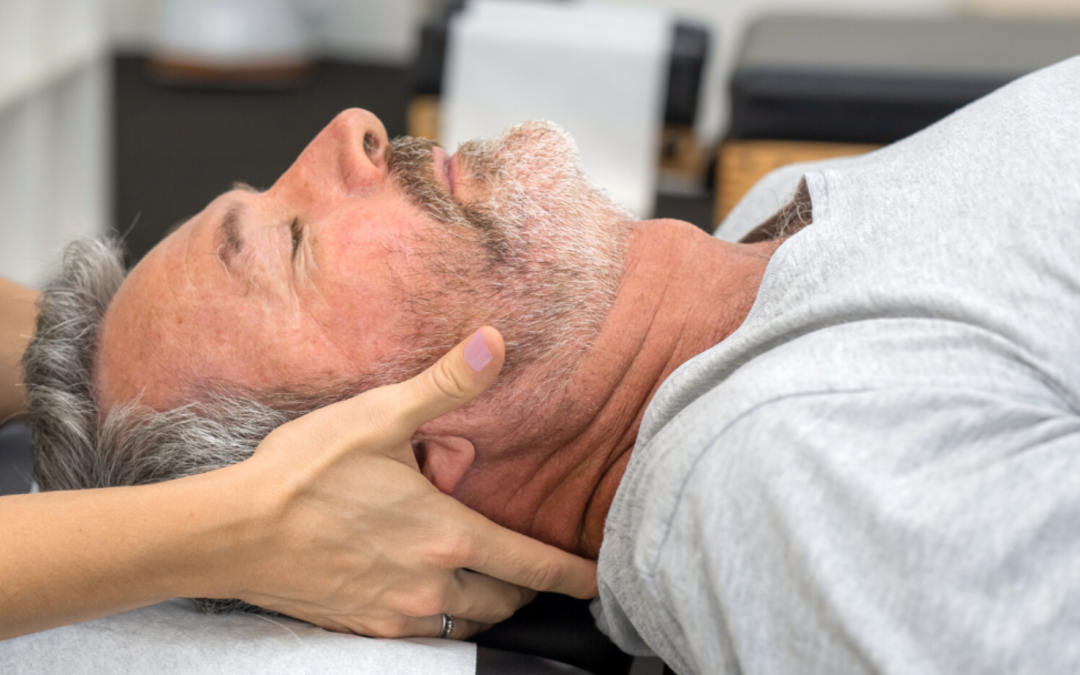Chiropractors are university-trained healthcare professionals who treat various conditions involving the musculoskeletal and nervous systems as well as promoting overall wellness through chiropractic care.
One of the most common techniques chiropractors use is spinal adjustment or manipulation.
A systematic review of 51 trials conducted from 2000 to 2017 found that this technique improved function and reduced symptoms in patients with chronic lower back pain.
What exactly is it though? And is it treating your spine or your brain (or both)?
What is a chiropractic adjustment?
A chiropractic adjustment is a treatment technique performed on vertebral joints in the spinal column to relieve pain. That may sound quite mechanical but modern chiropractic is actually quite a neurological or brain-based discipline. That’s because your spine and brain are intricately connected.
Your spinal column: brain-body communications
Your body has many specialised systems – digestive, cardiovascular, musculoskeletal, nervous, endocrine etc. Because there’s so much to learn about each one, modern medicine tends to treat them as separate entities and doctors pursue lengthy training to become qualified as a specialist in that particular area.
There are many benefits to that but it’s also vital that we remember that your body does not see itself as a series of separate systems. Each part of your body relates to and relies on the rest in many essential ways.
Let’s look, for example, at the relationship between your musculoskeletal system and your central and peripheral nervous systems. All give a starring role to your spine.
The musculoskeletal aspects include the vertebrae, facet joints, shock-absorbing discs and the muscles and ligaments that help to hold everything in place while allowing enough (but not too much!) flexibility. The central nervous system aspects include the spinal cord, which runs from the brain down through the spinal canal. The various nerves of your peripheral nervous system branch out from there, exiting your spine and following their own path to other parts of your body.
As you can see, there’s a strong relationship between your brain and your musculoskeletal system. When you want to move a healthy joint, your brain sends an electrical signal into your spinal cord which then messages the joint to make it move. Every time you stand up, sit down or reach for your cup of tea, those important signals are happening in the background to enable your movements.
But what about unhealthy joints? Your joint movements can become restricted through injury, degenerative changes or tissue damage. This changes the tension in the muscles, tendons and ligaments that support that particular joint and alters the overall joint position sense. That, in turn, alters the messages to the brain and can create difficulties with balance.
Let’s say an accident, injury or underlying condition leads to a misalignment in your spinal vertebrae. That may lead to a compression or irritation of one of the nerves that exits your spinal cord near that particular vertebrae. And that can lead to weakness, tingling, pain or numbness in the area of your body supplied by that nerve. This is often the case with sciatica, for example.
Thankfully, your brain has an amazing capacity for change and is capable of rewiring itself to function in new ways when life changes. This is known as neuroplasticity. That innate ability allows babies to learn to crawl and stroke survivors to relearn skills using new neural pathways after damage to some areas of the brain. And that’s part of what we’re doing with a chiropractic adjustment.
How does a chiropractic adjustment work?
A chiropractic adjustment aims to ease your pain and improve your function by restoring motion in the joint and increasing the blood supply to the injured area for better healing. As a result of this process, patients may feel better and we can observe an improvement in spinal alignment.
During a chiropractic adjustment, your chiropractor will use their hands or small instruments to apply quick, controlled force to a joint or to gently stretch your joints beyond their usual range of motion. It’s also known as spinal manipulation or joint manipulation.
We often find changes in the tension of muscles, tendons and ligaments supporting an adjusted joint. That then changes the messages to your brain and contributes to neuroplasticity.
Sometimes, you may hear a ‘pop’ or ‘click’ during a chiropractic adjustment. This is because the adjustment has released various gases that have become trapped in the joint – you’ll hear a similar sound if you pull your knuckles.
What is an Activator?
There are many ways to adjust joints. Chiropractors have traditionally used hands-on manual adjustments – and continue to do so as many patients like this method.
However, we also now use several different instruments to mobilise joints – the Activator is one of these. It’s a hand-held instrument that provides a quick, low-force impulse at specific points. It’s often more gentle than a manual adjustment, meaning you’re less likely to hear any pops or clicks.
Other instruments we use include:
- Arthrostim – a hand-held instrument that can deliver many thrusts per second
- CAT – another thrust-adjustment device.
These instruments help us create different grades of movement depending on the force and direction required.
How can Aurum Health Care help?
Aurum Health Care’s chronic pain consultants are highly qualified chiropractors. We’re trained to assess how joints (and supporting soft tissues) move and function.
Our best skill is finding the real problem. We conduct a thorough assessment of each patient to identify which joints are not functioning properly.
Because we focus on finding the real problem, we’re able to offer evidence-based treatments that target the true cause of your pain and discomfort. That may include brain-based chiropractic techniques that improve joint function and allow your brain to absorb new movement patterns and awareness.
Using best-evidence methods, we perform treatments involving a specific stretch of the ligaments and tendons in a precise direction to restore the movement in the joint. The grade of stimulation or movement performed is dependent on many individual factors such as your spinal integrity, bone density, stiffness and flexibility. Change happens because we’ve found and addressed the true problem.
If you’d like to experience Aurum Health Care’s capable and compassionate chiropractic care, please make an appointment.
Disclaimer
All information is general and is not intended to be a substitute for professional medical advice. Aurum Health Care can consult with you to confirm if this treatment is right for you.






